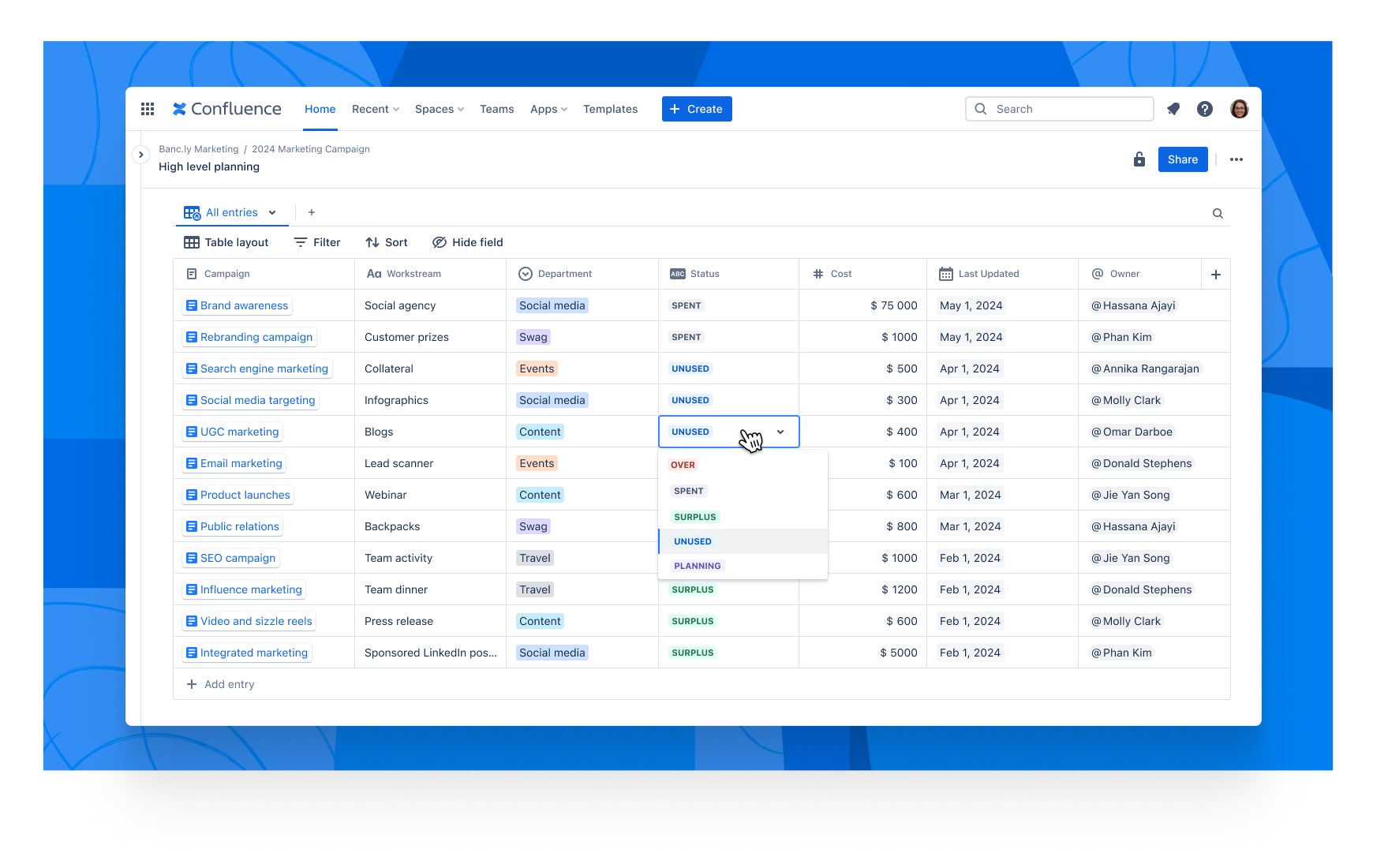Consejos y trucos para sacar el máximo partido a las bases de datos de Confluence
El teletrabajo está dejando de ser una excepción para convertirse en la modalidad de trabajo más frecuente, de modo que, en la actualidad, los trabajadores quieren herramientas que les permitan colaborar de forma fácil y asincrónica.
Según una encuesta reciente de Microsoft, la mayoría de los trabajadores no están satisfechos con las prestaciones que les ofrecen estas herramientas:
- El 59 % afirma que sus herramientas de colaboración no se ajustan a las preferencias de trabajo de sus equipos.
- El 72 % señala que la incompatibilidad de sus herramientas de colaboración dificulta la colaboración entre varios equipos.
Si estás buscando una forma de poner fin a las dificultades de colaboración entre equipos, las bases de datos de Confluence pueden ser justo lo que necesitas. Estas son una innovadora biblioteca de trabajo que permite a los equipos crear, gestionar y contextualizar datos fundamentales de todos los equipos en una ubicación centralizada.
Analicemos en profundidad las bases de datos de Confluence: hablemos de lo que son y cómo usarlas, y veamos algunos consejos y trucos que pueden ayudar a tu equipo a sacarles el máximo partido.
Trucos y consejos para las bases de datos de Confluence
Primero, para tener más claro de qué funciones hablamos, hagamos un recorrido rápido por la interfaz de bases de datos.
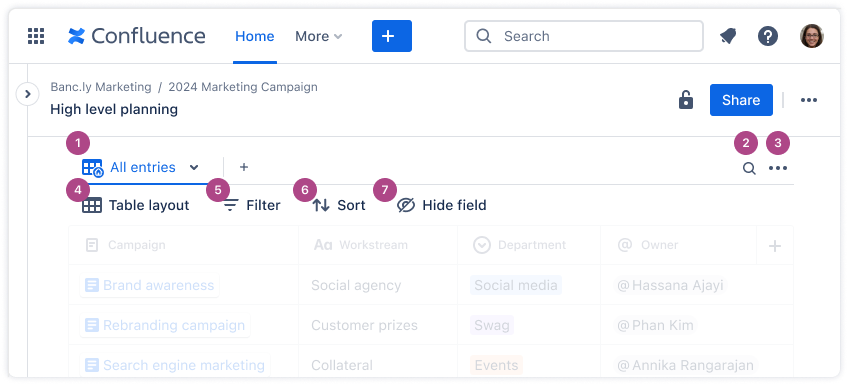
- Con las vistas de la base de datos, puedes personalizar la forma en la que se muestra tu base de datos cuando la compartes con otras personas. Usa las vistas para definir el diseño, filtrado, clasificación y campos visibles de tu base de datos.
- Con la búsqueda rápida, puedes buscar rápidamente entradas en la base de datos.
- El menú Más incluye acciones de la base de datos, como deshacer, rehacer, bloquear o copiar la estructura, importar, exportar, obtener ayuda y enviar comentarios.
- Los diseños definen la forma en la que se muestra tu base de datos. Puedes elegir entre diseños de tabla, tarjeta y tablero.
- Con las entradas de filtro, puedes definir criterios de visualización de datos específicos. Si eliges definir varios filtros, puedes hacer que todos o solo algunos filtros concretos coincidan al mostrar tus entradas.
- Con Ordenar por campo, puedes definir el orden de las entradas en función de los valores de campo, como ascendente (flecha hacia arriba) o descendente (flecha hacia abajo).
- Con Ocultar campos, puedes ocultar los campos de tu vista deseleccionándolos.
Ahora que hemos analizado las principales opciones de la base de datos, vamos a profundizar en cómo puedes utilizarlas.
Añadir campos a las páginas de Confluence y a las incidencias de Jira
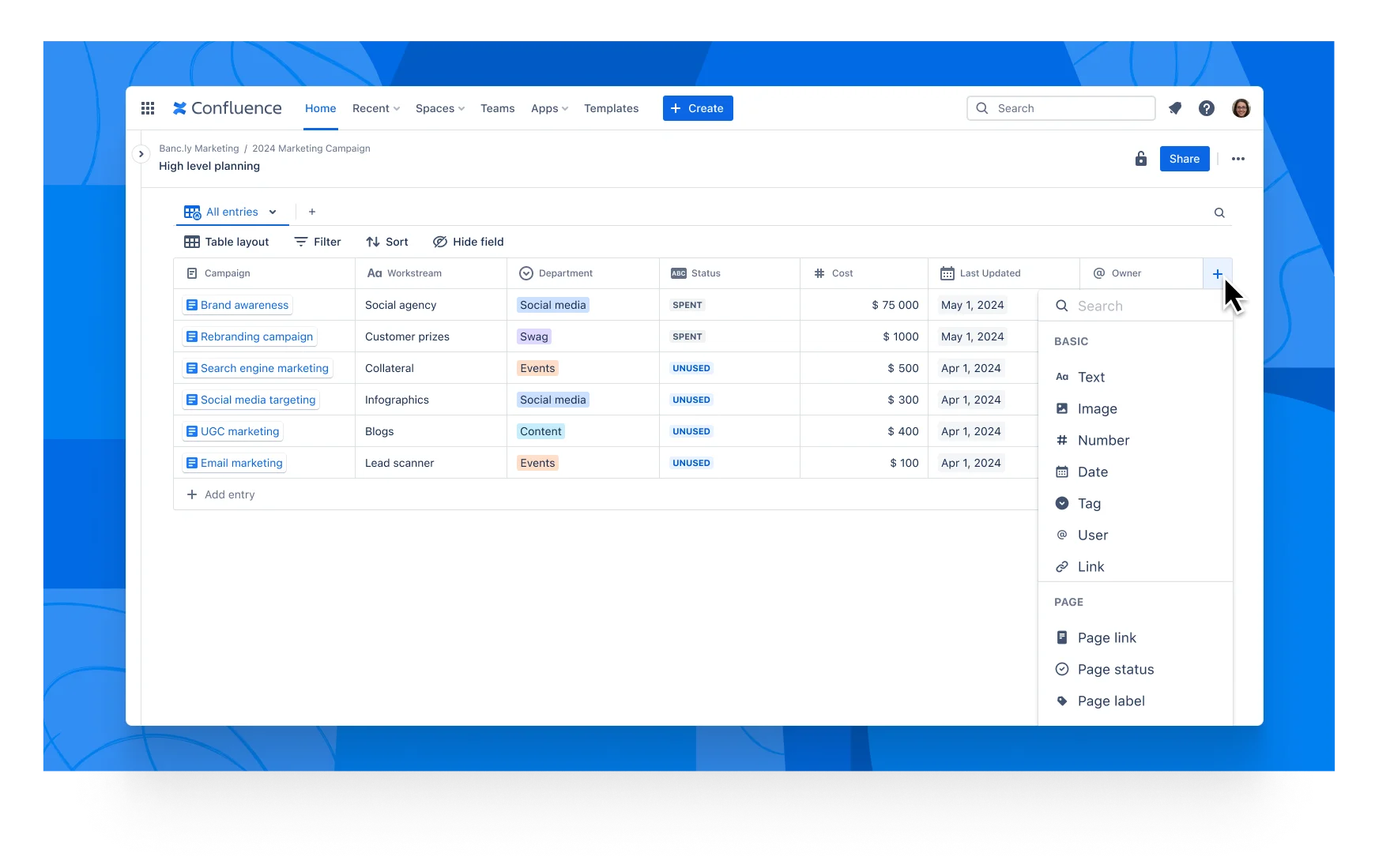
Cada estructura de bases de datos de Confluence se define según los tipos de campo configurados.
Usa los tipos de campo para definir el tipo de datos que quieras almacenar en un campo determinado (texto, números, fechas o imágenes). Con los tipos de campos, puedes ordenar, filtrar y buscar fácilmente información concreta en tu base de datos.
Te mostramos cómo crear campos y cómo añadir datos básicos como texto, imagen, fecha y usuario en el recurso "Primeros pasos".
Ahora, veamos algunos de los tipos de campos más complicados que puedes utilizar en las bases de datos de Confluence.
Campos de página
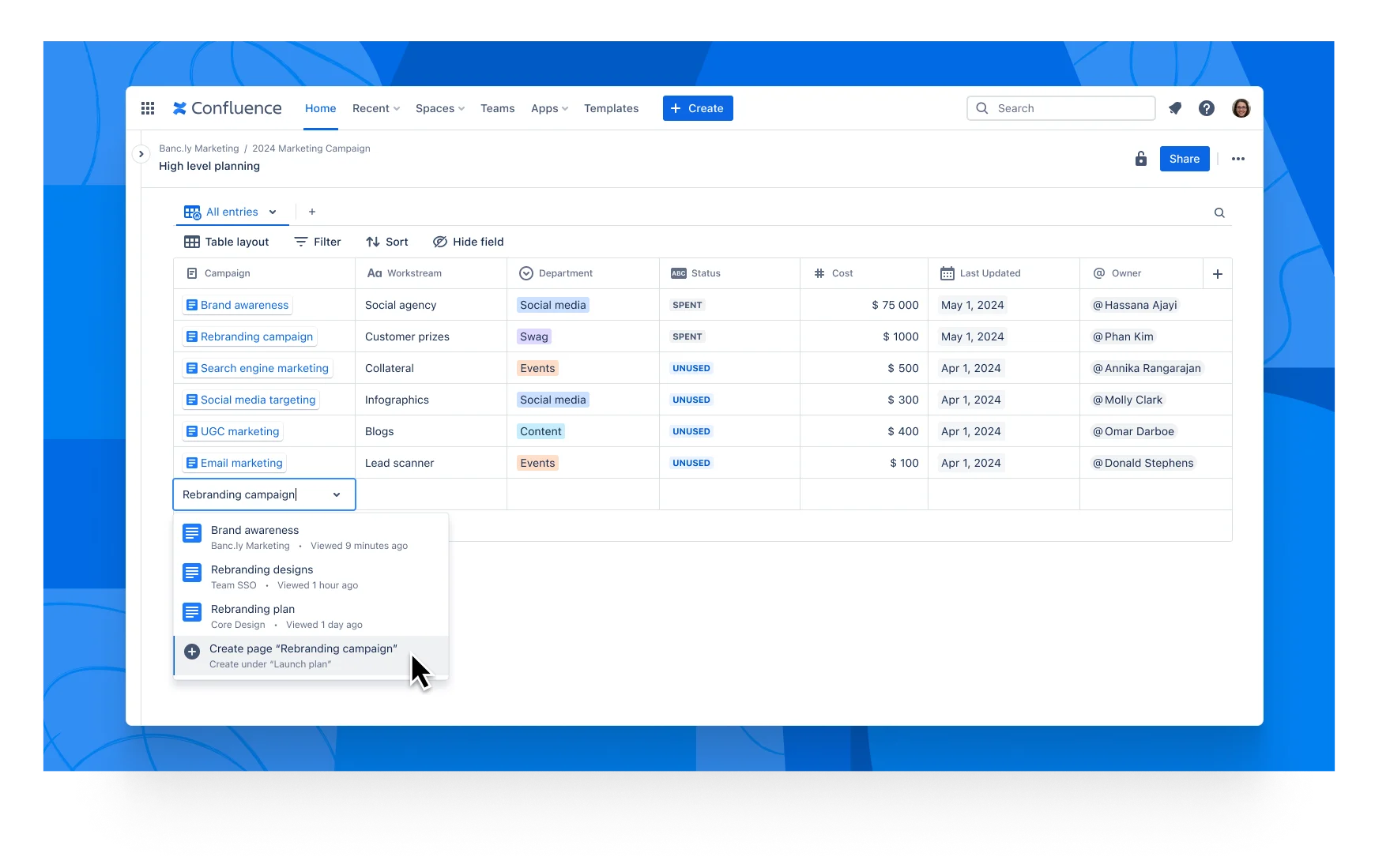
Los campos de página son un tipo de campo que te permite vincular tus bases de datos a las páginas pertinentes de Confluence.
Usa los campos de enlace de página para vincular las entradas a las páginas de Confluence o crea nuevas páginas directamente en tu base de datos sobre la marcha. Por ejemplo, al gestionar proyectos, puedes conectarte y crear una página más detallada y específica para el proyecto con cada entrada del proyecto, directamente en la base de datos.
Cuando hayas creado el campo de enlace a la página, solo tienes que buscar y añadir la página de Confluence que quieras incluir en tu base de datos.
Detalles de la página
Con el campo Detalles de la página, puedes mostrar los metadatos de una página vinculada de Confluence. Por ejemplo, puede resaltar el autor de una página y cuándo se creó o mostrar texto enriquecido de tu macro de extractos.
También puedes hacer clic en el campo Estado de la página y elegir uno de los estados personalizados o sugeridos para cambiar el estado de cualquier campo de las bases de datos.
Cuando cambies el estado de las bases de datos, el cambio se reflejará también en la página de Confluence correspondiente.
Campos de Jira
Usa el campo de incidencias de Jira para vincular las entradas de tu base de datos a una o varias incidencias de Jira y crear una hoja de ruta con las incidencias que haya que abordar.
Haz clic en la casilla "NOMBRE DE CAMPO" y selecciona "Campo de incidencia de Jira".
En el menú desplegable "INSTANCIA DE JIRA", selecciona "Jira del sistema".
Se creará un campo de incidencia de Jira en tu base de datos, donde podrás buscar y vincular cualquier incidencia de Jira que ya exista a tu base de datos.
Con el campo Detalles de incidencia de Jira, puedes mostrar los detalles del campo de Jira de una incidencia de Jira vinculada dentro de una entrada para gestionar mejor las incidencias. Por ejemplo, puedes configurar este campo para ver cuándo se actualizó por última vez cada incidencia de Jira.
Este estado cambiará automáticamente cada vez que se actualice una incidencia.
Crear diseños personalizados
Las bases de datos de Confluence se pueden personalizar fácilmente para que cualquier equipo o persona pueda crear una vista que se adapte perfectamente a sus necesidades.
Puedes elegir entre tres diseños que tienen este aspecto:
Vista de tarjeta:
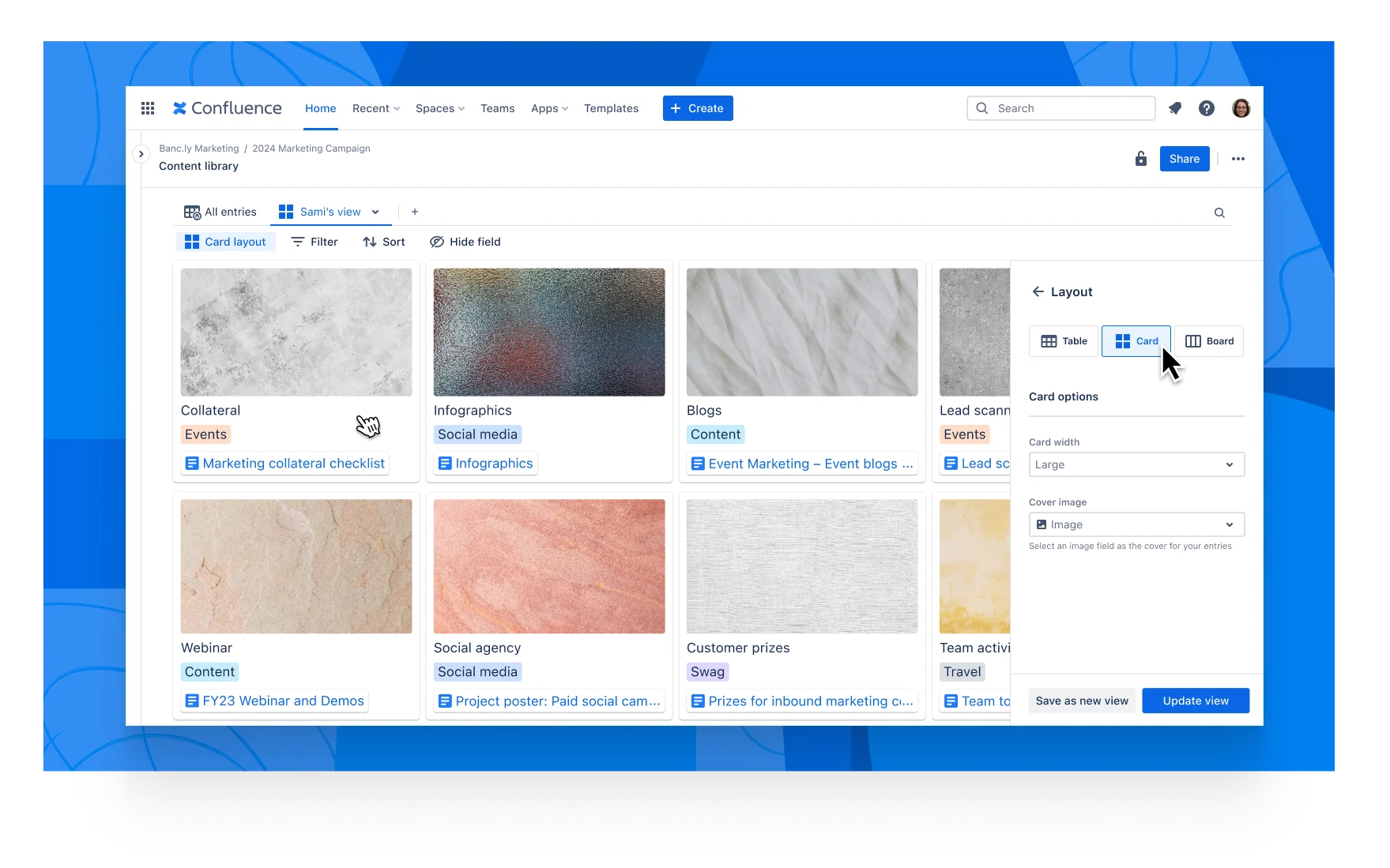
Vista de tablero:
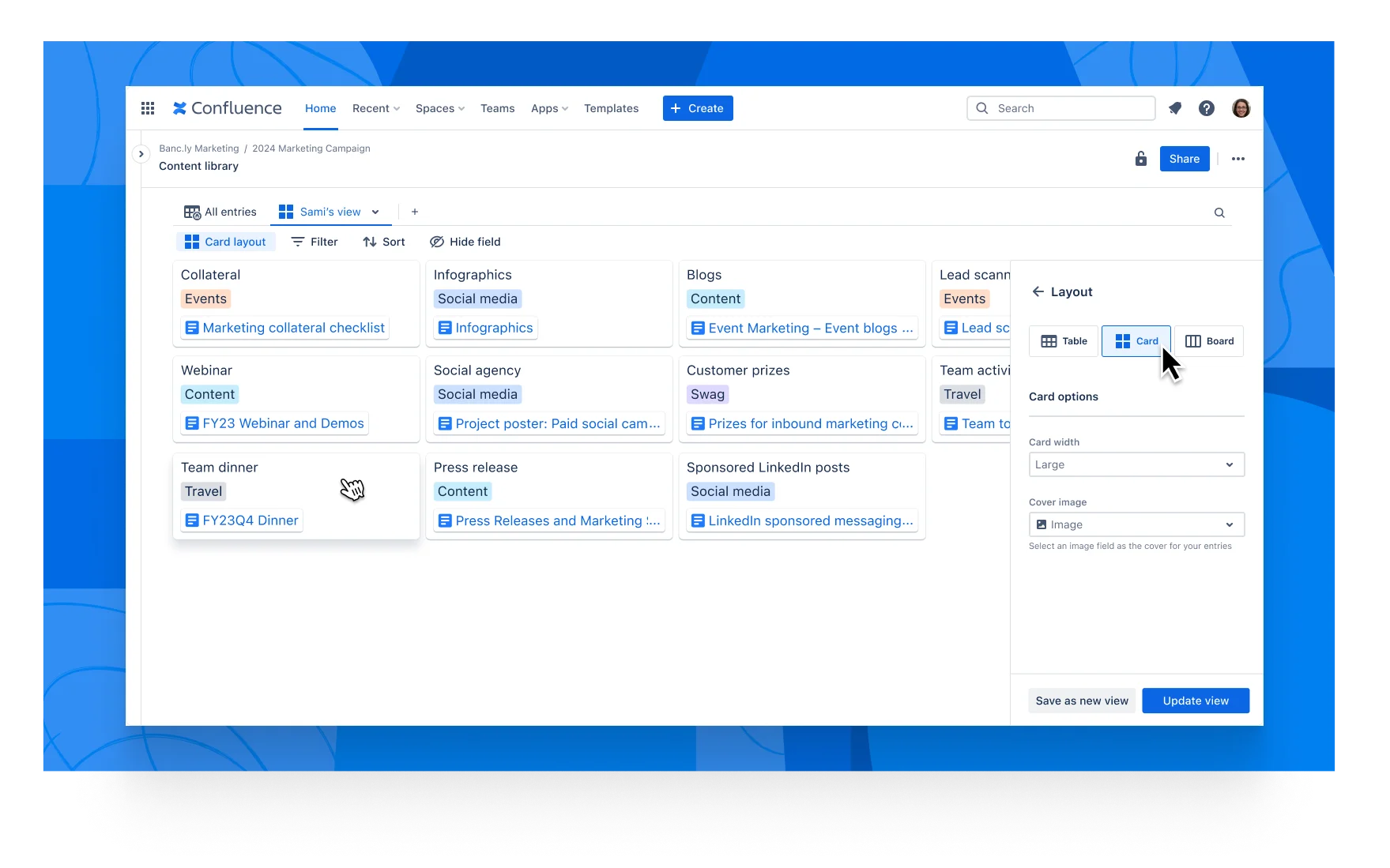
Vista de tabla:
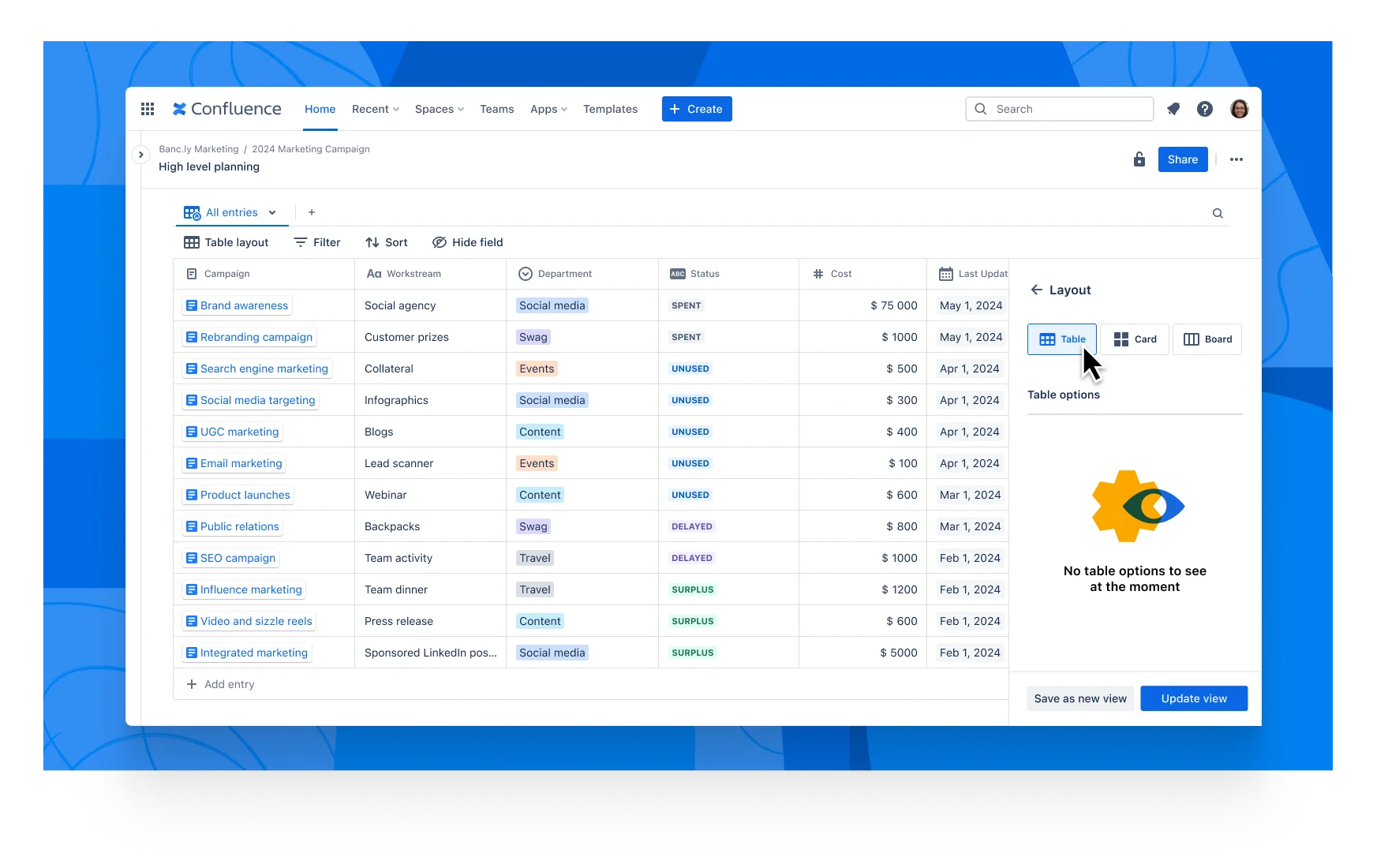
Puedes cambiar entre las tres vistas haciendo clic en el icono de vistas y, a continuación, eligiendo una vista.
Una vez que elijas una vista, podrás reorganizar las filas, las columnas, los tableros y las tarjetas para personalizarla aún más. Solo tienes que hacer clic en el icono del menú superior (kebab, desbordamiento) del campo que quieras mover y, a continuación, arrastrarlo y soltarlo donde prefieras.
Puedes mover cualquier campo que hayas creado y entre filas y columnas hasta encontrar el lugar perfecto para él en la vista de tarjeta, tablero o tabla.
Vistas guardadas
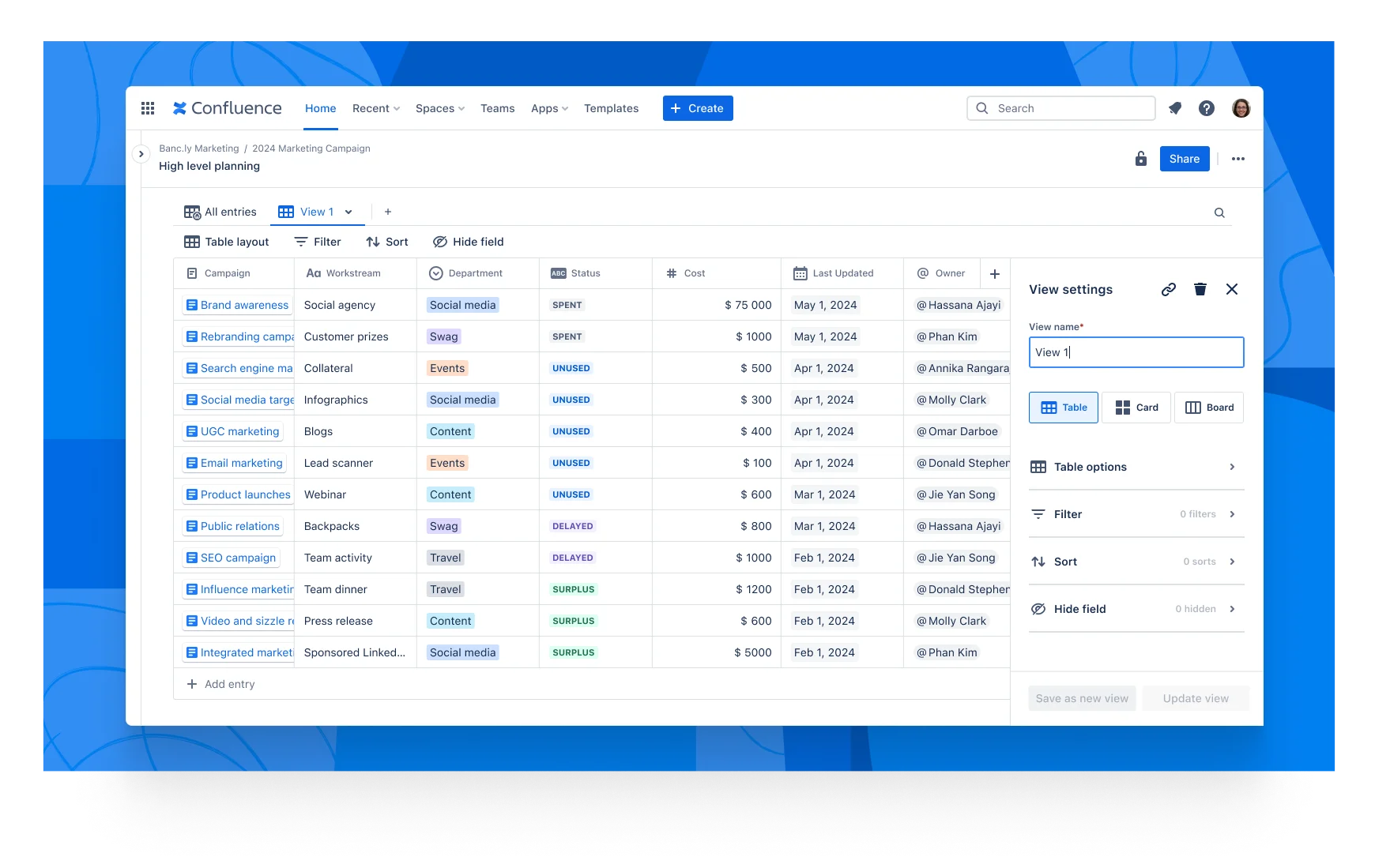
Con la función Guardar vista, puedes crear y mostrar vistas personalizadas a las que puede acceder todo el mundo (o quien tú elijas). Solo tienes que seleccionar la opción "Guardar vista" y hacer clic en "Guardar como vista nueva".
A continuación, se te pedirá que asignes un nombre a la vista que acabas de crear para que sea más fácil acceder a ella en el futuro desde el menú desplegable "Todas las entradas".
Para compartir la nueva vista guardada con cualquier persona de tu organización, solo tienes que hacer clic en el botón de copiar y enviar la URL copiada.
Ordenar y filtrar
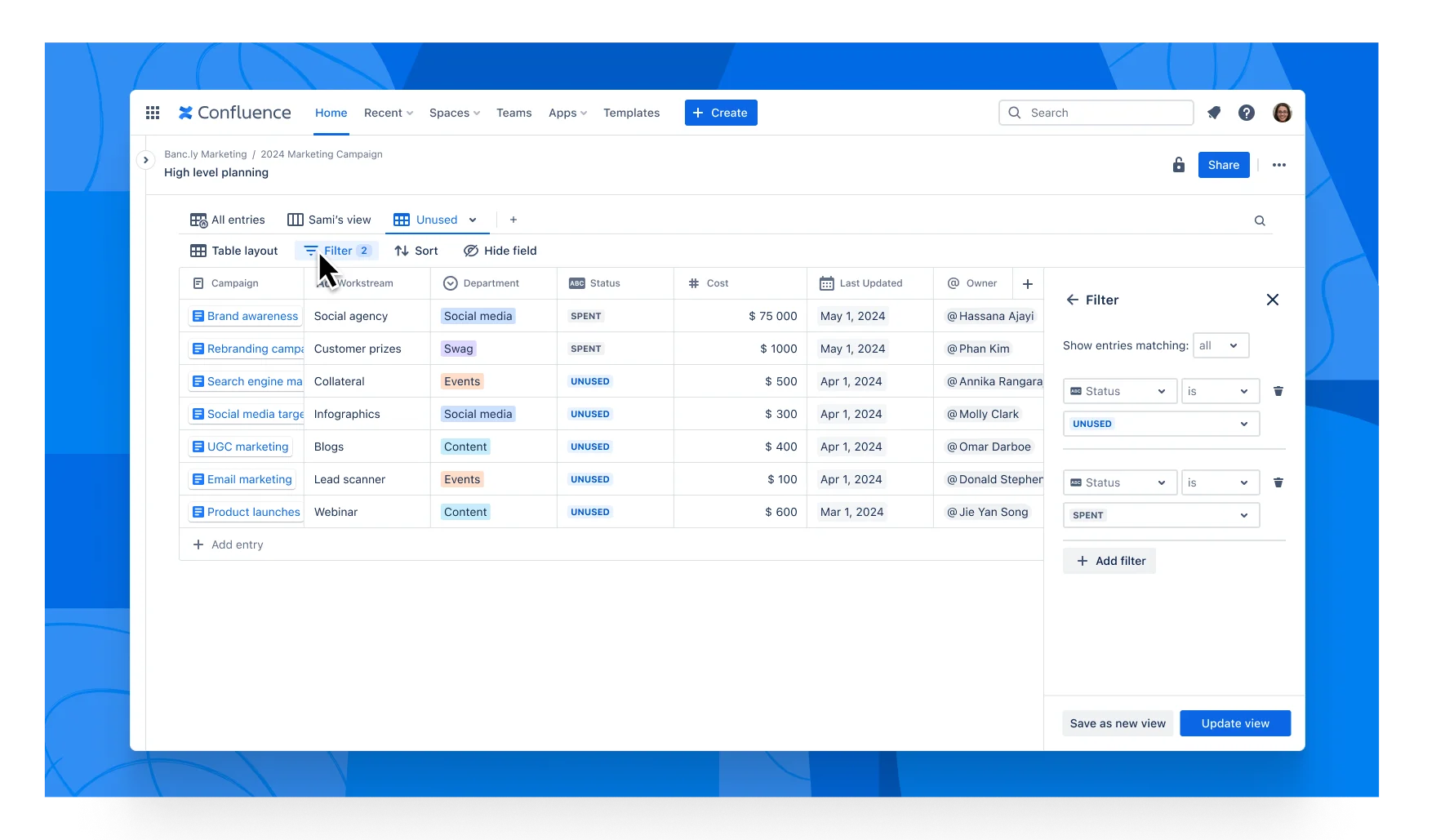
Con las bases de datos, puedes mostrar los datos de la forma que te parezca más lógica. Puedes ordenar o filtrar para mostrar la información más importante de cada base de datos que crees.
Puedes ordenar la vista por el campo de enlace a la página y las etiquetas que hayas creado.
También puedes crear filtros. Por ejemplo, puedes filtrar los datos para mostrar las entradas que pertenezcan a un usuario en concreto.
